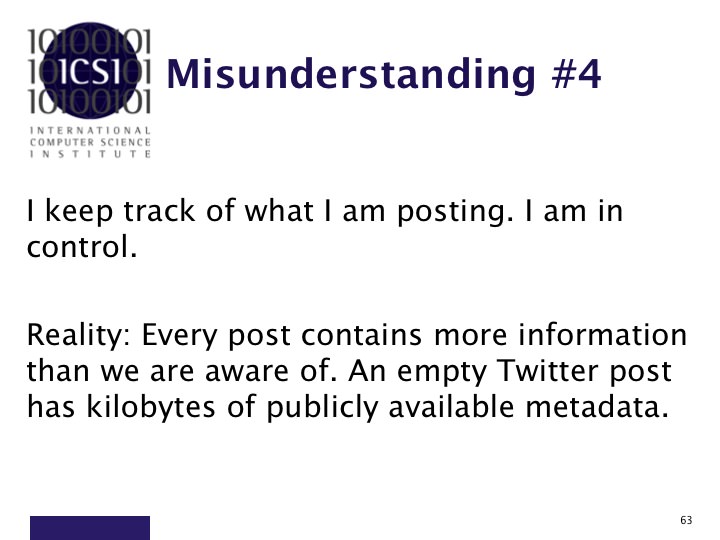Internet Privacy Misunderstandings, Part 4
This is the fourth post in a series debunking some common misunderstandings about online privacy. The images used in these posts have been adapted from a tutorial given by Gerald Friedland at ACM Multimedia in Nara, Japan in October. Read previous posts: one, two, three.

Even if you are careful not to post private information, you might not realize how much metadata becomes available whenever you post something online.
Metadata is information that is contained in files such as photos and status updates on social networks, but is not visible when looking at the content, so many people are not aware that it exists.
One example of metadata is geo-location data contained in some images. You might not realize the information is there, since you don't see it when you look at the photo, but it is easy to extract metadata from a file. And geo-tagging is only a small part of the information contained in a picture's metadata. Even with location data turned off in your camera, information such as the date and time a picture was taken might be included in the metadata, as well as the camera used. Some organizing software allows users to tag photos for easier organization - if you use tags such as names of people or where a picture was taken, that information becomes part of the photo's metadata as well. John McAfee recently inadvertently gave away his location (while hiding from police) via GPS coordinates in the metadata of a photo of him that was posted online. (Source)
Posts on social networks like Twitter and Facebook contain metadata as well, and many people are not aware of that.
Related technical papers, for more information:
- Cybercasing the Joint: Language Technologies, Multimedia Retrieval, and Online Privacy
- On Exploiting Innocuous User Activity for Correlating Accounts Across Social Network Sites
